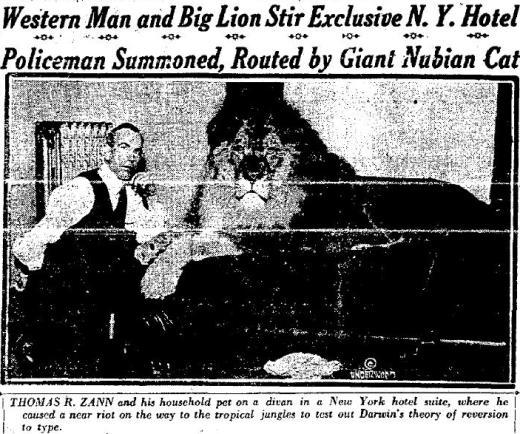On June 6th, 1920, press stuntman Harry Reichenbach booked musician T.R. Zan into an exclusive New York hotel. His luggage consisted of a massive packing case thought to contain a piano. When Mr. Zan ordered 50 pounds of meat for breakfast, an inquiry followed, revealing that the meat was for a lion enclosed in the packing case. As the press got hold of the story, they noticed the similarity between T.R. Zan and ‘Tarzan’. Reichenbach created the stunt to publicise the new Goldwyn-distributed film, The Revenge of Tarzan.
The film enjoyed immense free publicity across the US.
In an overly digitally-mediated culture, where Twitter and Facebook have lessened our susceptibility to messages, I think the power of impactful theatrics in offline tactics has the potential to reassert itself. Last week’s Project 84 stunt for CALM’s campaign to raise awareness of male suicide was immediately covered by most major news outlets across the world. I’m not sure a digital implementation of the same idea would have had such an impact. According to the CMO survey, digital media spend has accounted for roughly 64% of budgets in recent years.
Here are some numbers.
£1 spent on digital media generates an average of £4.28 in sales, so there is a clear case for ROI. Despite such impressive growth for digital advertising channels, traditional offline ad spend is still holding steady. Some agencies choose to undermine work with embarrassingly misguided and opaque digital-for-digital’s-sake executions. So my question is, has the pursuit of digital opportunities drawn attention away from our creative and strategic fundamentals?
Reichenbach’s visionary out-of-the-box tactics retain a remarkably firm grip on the imagination. Sure, non-digital stunts won’t reinvent the wheel, but efforts like T.R. Zan and Project 84 stand amongst the most haunting and effective in the canon.
